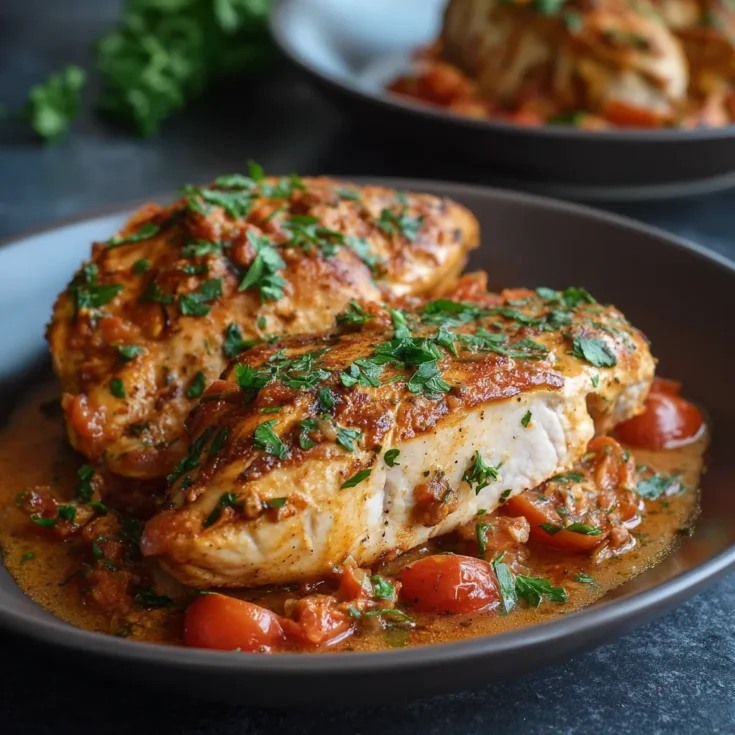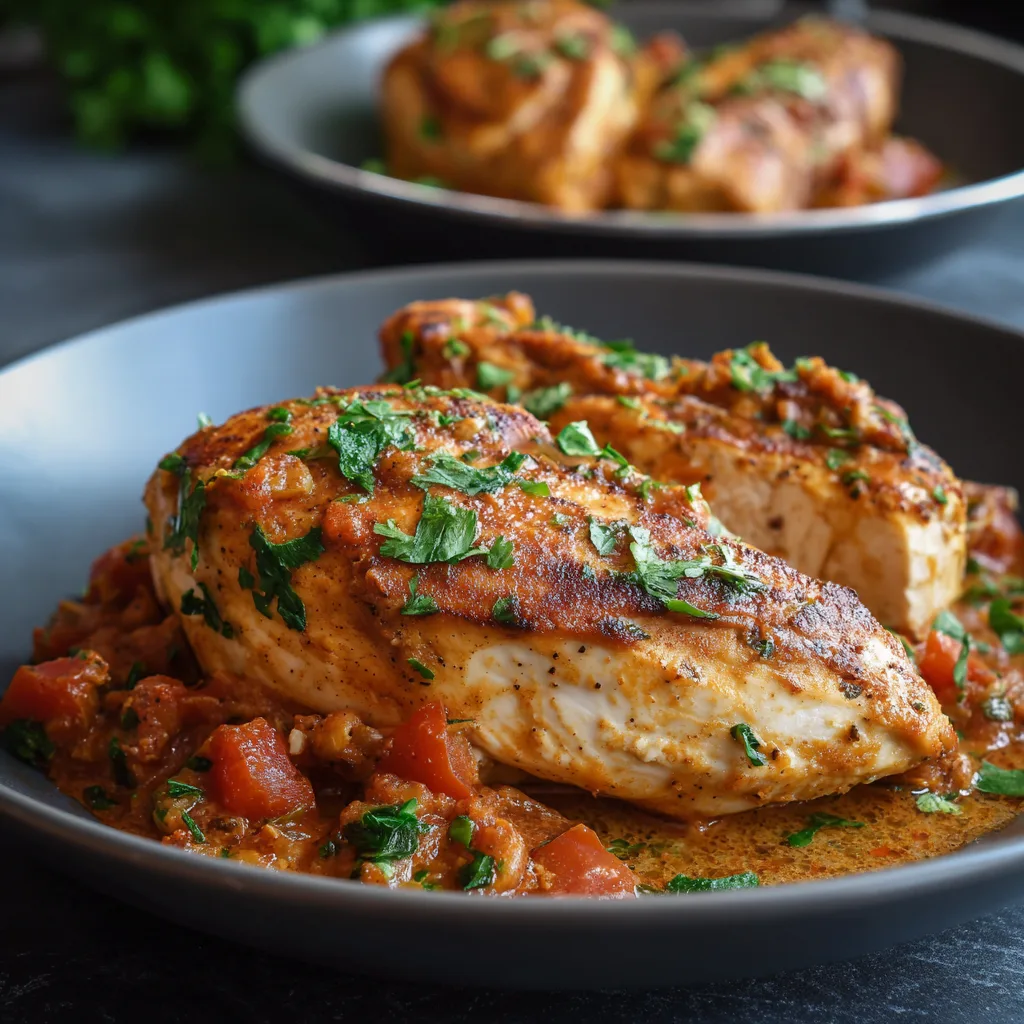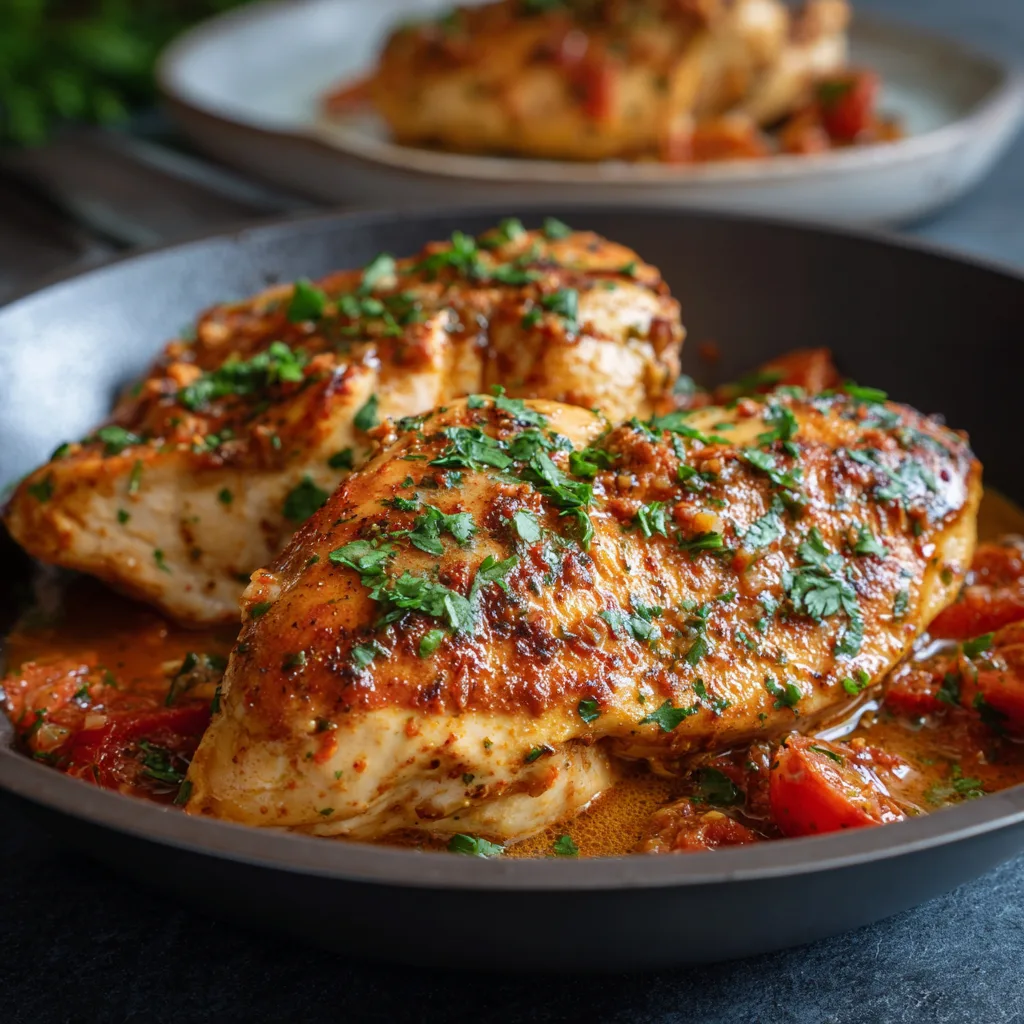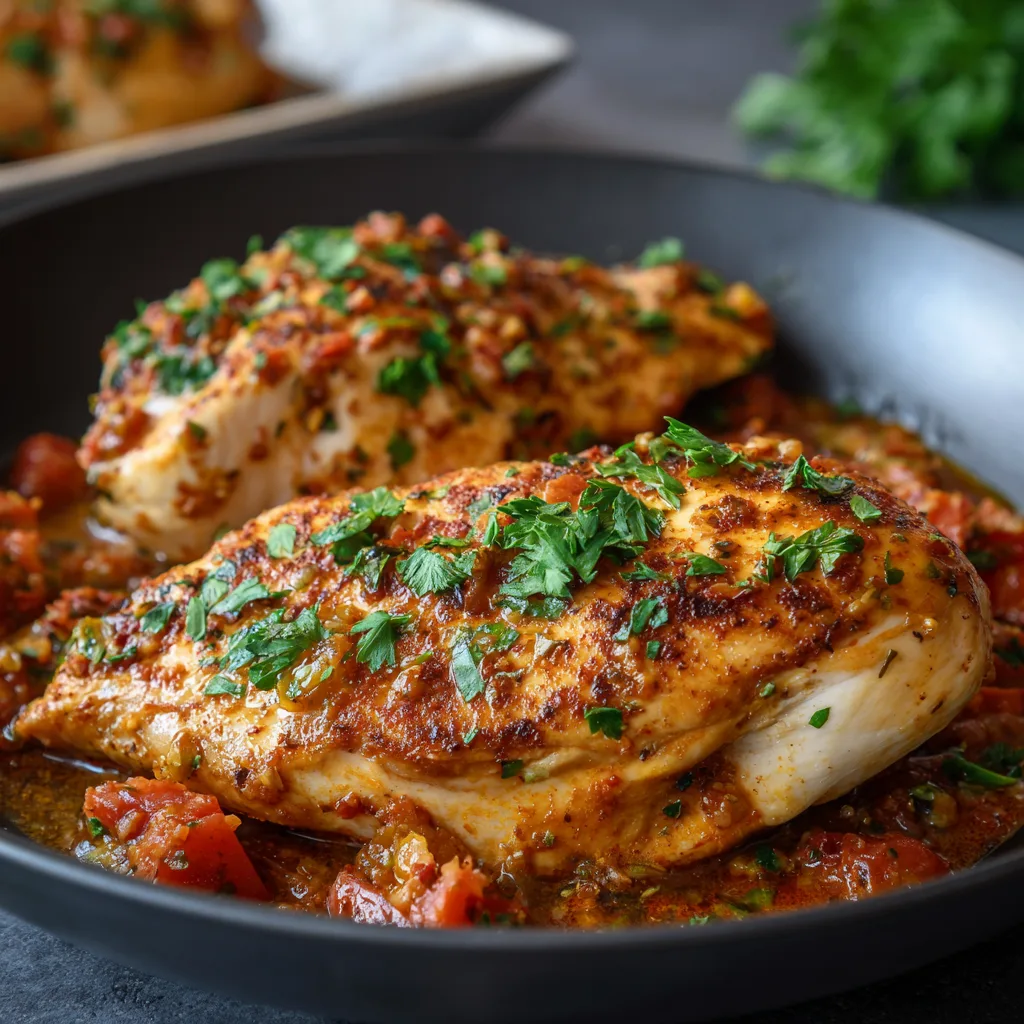High Protein Instant Pot Chicken Breast Skillet
If you’re after a quick, protein-packed meal, this High Protein Instant Pot Chicken Breast Skillet fits the bill perfectly. It combines the speed of pressure cooking with the rich flavors of a skillet finish. The result? Juicy chicken breasts loaded with protein and enhanced with a delicious sear—all in one easy dish.
Why This Recipe Matters
Using the Instant Pot ensures tender, moist chicken breasts every time. This method locks in juices and cooks the meat evenly, making it ideal for high-protein meal prep. The pressure cooker transforms simple chicken breasts into flavorful, succulent protein powerhouses. Following up with a skillet finish adds depth. Searing the chicken and simmering in a sauce boosts flavor and creates a satisfying texture. This one-pan technique keeps cleanup minimal and delivers a hearty, healthy dinner fast. Recipes like this are favorites for those balancing nutrition and time, offering both convenience and taste. It’s no surprise this method shines in kitchens seeking flavorful, efficient meals.
What You’ll Get From This Article
In this article, you’ll discover how to make the most of your Instant Pot and skillet to create a high-protein chicken dish that tastes like it took hours to prepare. You’ll learn about ingredient choices that maximize nutrition, a clear step-by-step cooking guide, and useful tips for perfect results. Plus, you’ll find a detailed recipe card to simplify your cooking process. Whether you’re new to pressure cooking or an experienced home chef, this guide will help you create a satisfying, protein-rich skillet meal in no time.
Advantages of Using the Instant Pot for Chicken Breast
The Instant Pot offers unmatched speed and convenience when cooking chicken breasts. It slashes traditional cooking time by using pressure, allowing you to prepare meals quickly without sacrificing quality. This makes it a lifesaver on busy days. Beyond speed, the Instant Pot delivers consistently moist, tender chicken. The sealed environment locks in juices, preventing dryness—a common issue with chicken breasts. This method produces high-protein meals that stay flavorful and juicy every time. Its versatility also shines in meal prep. You can easily slice, shred, or dice chicken cooked in the Instant Pot, adapting it for salads, wraps, or bowls. This flexibility makes it a staple in kitchens focused on nutrition and efficiency.
Why Finish in a Skillet?
Finishing chicken in a skillet adds layers of flavor that pressure cooking alone can’t achieve. Searing creates a delicious caramelized crust, boosting taste and texture. The skillet also lets you craft customizable sauces that cling to the chicken perfectly. This one-pan finish echoes popular skillet dinners that are both satisfying and easy to clean up afterward. The combined Instant Pot and skillet method balances fast cooking with rich, fresh flavors, delivering a meal that feels both home-cooked and effortless. It’s a technique well-loved for turning simple chicken breasts into a star dish.
High-Protein Benefits for Health & Fitness
Lean chicken breast is a top source of protein, essential for muscle repair and growth. High-protein meals help you stay full longer, reducing cravings and supporting weight management. This recipe fits perfectly into easy weeknight routines, offering nourishing fuel without lengthy prep. Whether you’re active, focused on fitness, or just want balanced meals, this skillet dish supports your goals by delivering a hearty protein punch in every bite.
Choosing the Right Chicken Breast
Selecting the right chicken breast sets the foundation for a successful dish. Opt for boneless, skinless chicken breasts because they offer lean protein and cook evenly in the Instant Pot. Their uniform shape ensures consistent pressure cooking, which locks in moisture and results in tender meat. Fresh chicken breasts usually yield the best texture, but frozen ones provide convenience for busy cooks. If you use frozen breasts, simply increase the cooking time by a few minutes to ensure thorough doneness. This flexibility makes the recipe accessible any day of the week. Whether fresh or frozen, both options deliver a high-protein base that works beautifully for quick skillet finishes.
High-Protein Add-Ins & Supporting Ingredients
To boost flavor and moisture, adding broth or other cooking liquids is essential. A cup of chicken broth not only helps the Instant Pot build pressure but also infuses the chicken with rich taste. When moving to the skillet, spices and herbs play a crucial role in elevating the dish. Garlic, paprika, thyme, and rosemary bring warmth and depth. Fresh aromatics like minced garlic or shallots add brightness. Minimal healthy fats, such as olive oil or butter, enhance searing and contribute to silky sauces. These carefully chosen ingredients complement the chicken’s natural flavor while keeping the meal high in protein and low in unnecessary additives.
Optional Macros-Friendly Extras
For those seeking a more balanced plate, adding plant-based proteins like quinoa, lentils, or beans works well. These ingredients can be integrated during the Instant Pot cooking phase or added separately, depending on texture preferences. They boost fiber and protein, creating a fuller meal. Including skillet vegetables like bell peppers, spinach, or zucchini adds essential vitamins and minerals while maintaining a low-calorie count. When it comes to sauces, consider creamy options using Greek yogurt or coconut milk for richness without extra carbs. Savory sauces based on tomato or mustard provide tang and complexity. Global flavors such as Mediterranean herbs or smoky chipotle spice offer exciting twists that keep this high-protein chicken skillet fresh and appealing.
Instant Pot Cooking Steps
Begin by seasoning your chicken breasts generously. Use a blend of salt, pepper, garlic powder, paprika, and your favorite herbs. This seasoning will infuse the meat with flavor during pressure cooking. Place the metal trivet inside the Instant Pot, then pour in about one cup of chicken broth or water. The trivet keeps the chicken elevated above the liquid, preventing it from steaming directly and helping it cook evenly. Arrange the seasoned chicken breasts on the trivet in a single layer to avoid overcrowding.
For fresh chicken breasts, set the Instant Pot to high pressure for 8 to 10 minutes. If you’re using frozen chicken, increase the cooking time to about 12 to 14 minutes to ensure thorough cooking. After the pressure cooking cycle completes, allow the pot to release pressure naturally for at least 10 minutes. This natural release helps the chicken retain moisture and stay tender. Avoid using quick release immediately, as it can cause the meat to contract and dry out. Once the natural release finishes, carefully perform a quick release to remove any remaining pressure.
After opening the lid, transfer the chicken breasts to a plate and cover them loosely with foil. Let them rest for five minutes to allow the juices to redistribute evenly throughout the meat. Resting ensures juicy, tender chicken that won’t dry out when you sear it in the skillet.
Transitioning to Skillet
Heat a tablespoon of olive oil or butter in a large skillet over medium-high heat. Once the fat is hot, add the rested chicken breasts. Sear them for about two to three minutes per side until they develop a golden-brown crust. This caramelization creates a flavorful outer layer that contrasts beautifully with the tender interior.
Next, deglaze the skillet by pouring in some of the cooking liquid reserved from the Instant Pot. Scrape the bottom of the pan with a wooden spoon to release any browned bits, which add rich flavor. Add minced garlic, chopped onions, or fresh herbs to the skillet to elevate the aroma and taste. You can also incorporate a simple sauce—such as a squeeze of lemon juice, a spoonful of tomato paste, or a splash of low-sodium soy sauce—to complement the chicken.
Plotting Out One-Pan Finish
Once the skillet ingredients come together, lower the heat to medium and let the sauce simmer. This simmering phase allows the sauce to reduce and thicken, coating the chicken breasts perfectly. If you’re adding vegetables like bell peppers, zucchini, or spinach, toss them in at this stage. Simmer until the vegetables soften but remain vibrant and crisp.
Timing is key to achieving the ideal texture. Keep the simmer short enough to preserve vegetable freshness but long enough to meld flavors seamlessly. Stir occasionally to prevent sticking and to evenly distribute the sauce. Taste and adjust seasonings as needed—adding salt, pepper, or a pinch of herbs to finish. When the sauce reaches your preferred consistency and the chicken is glazed with a flavorful coating, your high-protein Instant Pot chicken breast skillet is ready to serve.
Pro Tips for Best Results
Avoid stacking chicken breasts tightly in the Instant Pot. Overcrowding traps steam unevenly, leading to inconsistent cooking. Arrange them in a single layer or slightly overlapping for best results. Using enough liquid is essential—not just for pressure building but also to prevent burning. Always pour at least one cup of broth or water before cooking. After pressure cooking, scrape the bottom of the pot or skillet to lift flavorful browned bits; these add depth to your sauce. Lastly, let the chicken rest before slicing. Resting redistributes juices inside the meat, keeping it moist and tender when served.
Variations to Suit Dietary Needs
Customize this recipe easily for different diets. For low-carb or keto preferences, add cream or shredded cheese during the skillet finish. These ingredients boost fat content while maintaining richness. For gluten-free or paleo diets, choose sauces free from gluten-containing ingredients and focus on fresh herbs and spices. Mediterranean herbs like oregano, thyme, and rosemary add brightness without extra carbs or gluten. You can also experiment with global flavors such as teriyaki glaze, butter-style sauces, or spice blends to keep the dish exciting and versatile.
FAQs
How long do I cook chicken breast in an Instant Pot?
Fresh chicken breasts cook well at high pressure for about 8 to 10 minutes. Frozen breasts require 2 to 4 extra minutes. Always aim for natural pressure release to keep meat juicy and tender.
Can I sauté or brown chicken before pressure-cooking?
Yes. Sautéing adds a rich, caramelized flavor. If you brown chicken first, reduce pressure cooking time by 2 to 3 minutes to avoid overcooking.
Will the chicken dry out if I quick-release pressure?
Quick release can cause chicken to shrink and dry out. Natural release is preferred to maintain juiciness and texture.
Can I cook chicken and rice together in the Instant Pot?
Yes. Use proper layering with rice below and chicken above. Adjust liquid ratios and cooking times carefully to ensure both cook perfectly without mushiness or dryness.
High Protein Instant Pot Chicken Breast Skillet Recipe – Fast, Healthy & Filling

A quick, juicy, high-protein chicken breast dish cooked in the Instant Pot, finished in a skillet with a flavorful sauce—ready in about 30 minutes.
Ingredients
- 4 boneless, skinless chicken breasts
- 1 cup chicken broth
- 1 teaspoon garlic powder
- 1 teaspoon onion powder
- 1 teaspoon paprika
- Salt and pepper, to taste
- 1–2 tablespoons olive oil or butter
- Optional: fresh herbs (thyme, rosemary), sauce (tomato, mustard, cream), and vegetables (bell peppers, spinach)
Instructions
☐ Season chicken breasts evenly with garlic powder, onion powder, paprika, salt, and pepper.
☐ Pour chicken broth into Instant Pot and place the trivet inside.
☐ Arrange the chicken breasts on the trivet in a single layer.
☐ Seal the Instant Pot lid and pressure cook on high for 8 minutes (add 2–4 minutes if chicken is frozen).
☐ Allow a natural pressure release for 10 minutes, then carefully perform a quick release.
☐ Transfer chicken breasts to a hot skillet with oil or butter over medium-high heat.
☐ Sear each side for 2–3 minutes until golden brown.
☐ Deglaze the skillet with reserved cooking liquid, scraping up browned bits. Add aromatics or sauce as desired.
☐ Simmer on medium heat until sauce thickens and coats the chicken.
☐ Remove from heat and let chicken rest for 5 minutes before slicing and serving.
Notes




